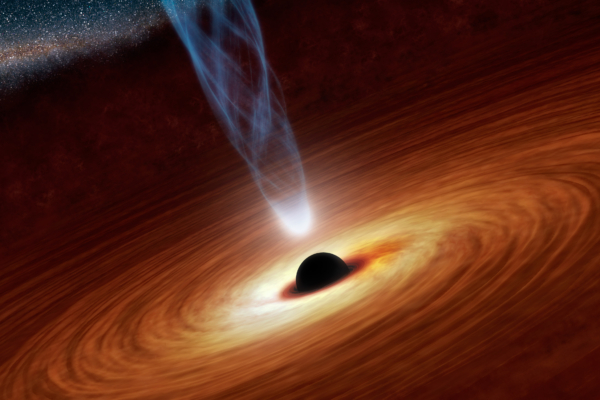Scientists have successfully created a “black hole bomb” in the laboratory for the first time, confirming a theory that has been in existence for over half a century. This breakthrough will help researchers gain a better understanding of how black holes rotate and concepts related to the universe.
According to a report by Live Science, American physicists William Press and Saul Teukolsky described a theoretical phenomenon called a “black hole bomb” in 1972, which refers to the idea that a mirror can reflect and exponentially amplify the electromagnetic waves emitted by a rotating black hole.
This perspective can be traced back to the foundational work of two other physicists. One of them is British mathematical physicist and Nobel laureate Roger Penrose, who proposed a method to extract energy from rotating black holes in 1969.
Subsequently, former Soviet astrophysicist Yakov Zel’dovich discovered in 1971, through research, that under certain conditions, rotating objects can amplify electromagnetic waves. This phenomenon is known as the Zel’dovich effect.
Today, physicists from research institutions such as the University of Southampton and the University of Glasgow have successfully created a “black hole bomb” in the laboratory to verify the Zel’dovich effect, aiding astrophysicists in a better understanding of how black holes rotate.
In this study, researchers conducted experiments using the concept of the Zel’dovich effect. They designed an electric motor to drive a rotating aluminum cylinder and wrapped three layers of metal coils around it. These coils generate a magnetic field and reflect it back to the cylinder, acting as mirrors.
When the researchers directed a very weak magnetic field towards the cylinder, they observed that the reflected magnetic field was stronger, exhibiting superradiance, which means it was greatly amplified.
Next, they removed the initial weak magnetic field from the coils. However, at this point, the circuit generated its own electromagnetic waves, which the rotating cylinder amplified, allowing the coils to accumulate energy. The Zel’dovich effect is fully unfolding between the rotation speed of the cylinder and the amplified magnetic field.
Zel’dovich had previously predicted that if the surface velocity of the rotating absorber (like the cylinder) is faster than the incident wave, it will transition from absorption to amplification, a point confirmed by this experiment.
In a report published on the preprint database arXiv, researchers stated, “The experiment described here presents a direct realization of a rotating absorber amplifier. The amplifier was first proposed by Zel’dovich in 1971 and later developed by Press and Teukolsky into the concept of a black hole bomb.”
One of the authors of the study, Maria Chiara Braidotti, a physics researcher at the University of Glasgow, told Live Science that while the team did not create a real black hole, this similar device proves a crucial concept – that rotational superradiance and exponential amplification are universally present and not limited to black holes.
Braidotti mentioned that this model can also help physicists understand how black holes rotate and the intersection of concepts in fields such as astrophysics, thermodynamics, and quantum theory.

